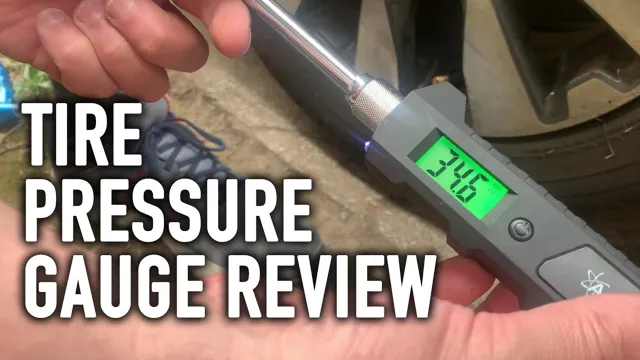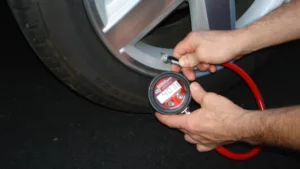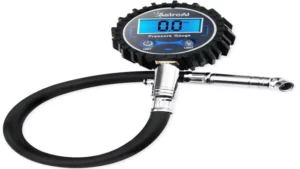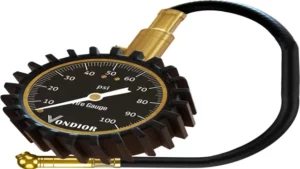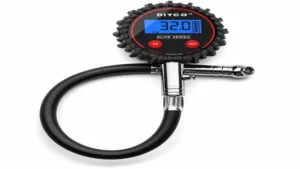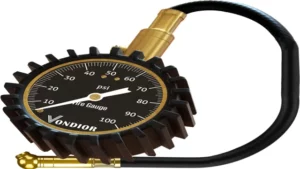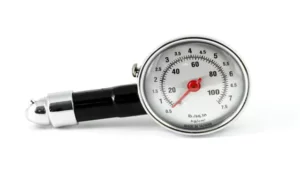When it comes to maintaining your vehicle, one of the most important things you can do is keep your tires properly inflated. Not only does it ensure a smoother ride, but it can also improve your fuel efficiency and extend the life of your tires. But how can you tell if your tire pressure gauge is accurate? There are a variety of factors that can affect the accuracy of your tire pressure gauge, from the age of the gauge itself to the temperature of the air around you.
And if your gauge isn’t calibrated correctly, you could end up over- or under-inflating your tires, which can lead to problems down the road. So how do you know if your gauge is giving you accurate readings? There are a few simple steps you can take to determine the accuracy of your tire pressure gauge, from comparing it to a calibrated gauge to testing it against a known pressure source. In this blog post, we’ll explore the different methods you can use to ensure that your tire pressure gauge is providing you with accurate readings.
We’ll also discuss some of the common mistakes people make when using a tire pressure gauge and how to avoid them. By the end of this post, you’ll feel confident that you can accurately determine the pressure in your tires and keep your vehicle running smoothly.
Why Accuracy Matters
Knowing how to tell if your tire pressure gauge is accurate is essential for the safety and performance of your vehicle. Accuracy is important because underinflation or overinflation of tires can lead to poor fuel economy, premature wear, and even accidents. A reliable tire pressure gauge ensures that your tires are properly inflated and maintains their condition.
To test the accuracy of your gauge, you can compare it to another gauge or have it calibrated by a professional. Checking tire pressure regularly and using an accurate gauge is crucial in maintaining the safety and efficiency of your vehicle. Don’t overlook the importance of tire pressure when it comes to your vehicle’s performance, and always use a trustworthy gauge to ensure accurate readings.
Avoid Tire Damage
As a car owner, you may not realize how important it is to maintain accurate tire pressure. However, inaccurate readings could cause serious tire damage, which could put you and other drivers at risk. When your tire pressures are too low, the tires may become weak and prone to damage.
On the other hand, if your tires are overinflated, excess pressure could cause them to burst, leading to accidents. That’s why it’s crucial to regularly check your tire pressure and ensure that it meets the manufacturer’s specifications. By doing so, you’ll not only avoid tire damage but also save money on replacement costs and improve your car’s fuel efficiency.
Don’t overlook the importance of accuracy when it comes to tire pressure – it could make all the difference in maintaining a safe and reliable vehicle. So, next time you’re on the road, ask yourself: “Are my tires accurate?”
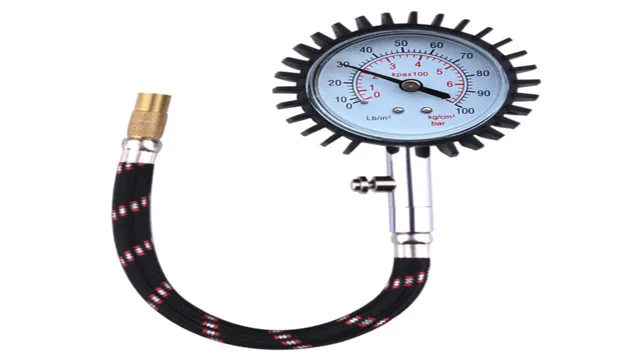
Improve Fuel Economy
Improving your vehicle’s fuel economy can save you money and reduce your environmental impact. However, it’s crucial to use accurate information when making changes to your car or driving habits. A seemingly small miscalculation or misconception can have a significant impact on your fuel economy.
For example, if you inflate your tires to the wrong pressure or use the wrong type of motor oil, you could be unknowingly decreasing your efficiency. It’s also important to not believe common myths, such as driving with the windows down instead of using air conditioning saves fuel. In fact, air conditioning can improve fuel economy at certain speeds.
By researching the most accurate and up-to-date information, you can make informed decisions and optimize your vehicle’s performance. As a result, you can achieve better fuel economy and save both money and the environment.
Check Your Tire Gauge Against a Known Accurate Gauge
If you’re questioning the accuracy of your tire gauge, one of the easiest ways to confirm if it’s correct is by testing it against a known accurate gauge. You can do this by taking your gauge to a tire shop and asking to compare it with the gauge they use to measure tire pressure. Another alternative is to invest in a digital tire pressure gauge, which is known to be more precise and displays the readings in an easy-to-read format.
Additionally, it’s always a good idea to check your gauge regularly for any signs of wear or damage, as this can also affect its accuracy. Neglecting to maintain or replace a faulty gauge can lead to incorrect readings and, ultimately, improper tire pressure, which can be dangerous. Keep your vehicle and passengers safe by ensuring you have a reliable, accurate tire pressure gauge.
Steps to Follow
One of the most important steps to follow when checking your tire pressure is to verify your tire gauge against a known accurate gauge. It’s not uncommon for tire gauges to lose their accuracy over time, leading to incorrect pressure readings. By comparing your gauge against a known accurate one, you’ll ensure that you’re getting reliable information about your tire pressure levels.
This step is crucial for preventing overinflation or underinflation, both of which can affect your vehicle’s performance and safety. It’s easy to find an accurate gauge at your local auto supply store or gas station, and most mechanics will be happy to check your gauge against theirs. By taking the time to verify your tire pressure gauge, you’ll save yourself time and money in the long run by avoiding tire damage and potential accidents on the road.
Remember, accuracy is key when it comes to your tire pressure, so don’t skip this important step.
Use a Calibration Tool
If you want to ensure that your tire pressure gauge is accurate, one of the best things you can do is invest in a calibration tool. These tools are designed to help you check the accuracy of your gauge and make any necessary adjustments. To use a calibration tool, simply attach it to your gauge and follow the instructions provided.
This will typically involve comparing the reading on your gauge to the reading on the calibration tool and making adjustments as needed. Once you’ve calibrated your gauge, you can be confident that it will provide accurate readings every time you use it. So if you want to keep your tires in tip-top shape, be sure to invest in a reliable tire pressure gauge and a quality calibration tool.
Overview of Calibration Tools
Calibration tools are vital instruments that ensure the accuracy and reliability of measurement equipment. As technology advances, the need for accurate readings also increases, and calibration tools assist in meeting these needs. Using a calibration tool eliminates errors and deviations in measurement readings, providing accurate and consistent results.
These tools also identify potential issues with equipment, allowing for preventative measures to be taken, reducing future downtime and maintenance costs. With a range of calibration tools available, including laser alignment systems, torque wrenches, and force gauges, among others, it is essential to choose the appropriate tool for the intended use and achieve optimum results. Calibration tools are an indispensable resource for industries that rely on precise measurements for quality control and essential to ensure products meet the highest standards in terms of quality and safety.
Steps to Calibrate Your Tire Gauge
When it comes to calibrating your tire gauge, using a calibration tool is the best option to ensure accuracy. A calibration tool is a device that can be used to check the accuracy of a tire gauge and adjust it if necessary. To begin, you will need to connect your tire gauge to the calibration tool and inflate the tire to a specific pressure.
The calibration tool will then display the actual pressure and allow you to compare it to the reading on your tire gauge. If there is a discrepancy, you can adjust your gauge accordingly using the tool. It is important to note that calibration should be done regularly to ensure your tire gauge is providing accurate readings and ensuring your safety on the road.
By utilizing a calibration tool, you can have peace of mind knowing that your tire gauge is properly calibrated.
Replace Your Gauge Regularly
Have you ever wondered if your tire pressure gauge is accurate? It’s essential to use an accurate gauge to ensure your tires are properly inflated, which directly affects your safety while on the road. One way to tell if your gauge is accurate is to test it against another gauge or a gauge at a tire service center. If there’s a difference, then it’s time to replace your gauge.
It’s also important to note that even the most accurate gauges can become less precise over time and with regular use, so it’s recommended to replace your gauge every year or two. Don’t risk driving on underinflated or overinflated tires due to an unreliable gauge. Keep yourself and your passengers safe by using a trustworthy gauge and replacing it regularly.
How Often to Replace
If you rely on gauges for daily operations or safety reasons, it’s important to know when to replace them. While it depends on the specific gauge, most experts recommend replacing them at least every three to five years. However, if the gauge is exposed to harsh conditions, such as extreme temperatures or chemicals, it may need to be replaced more frequently.
It’s important to keep a regular maintenance schedule and regularly inspect your gauges to ensure accuracy and to avoid potential breakdowns. Think of it like replacing the batteries in your smoke detector- it’s a small task that can make a big difference in safety and efficiency. By replacing your gauges regularly, you can keep your operations running smoothly and avoid costly downtime or safety hazards.
Signs of Wear and Tear
As much as we rely on gauges to measure the pressure and temperature of our equipment, they too have a lifespan. Signs of wear and tear can be subtle at first, but ignoring them can lead to costly mishaps and unscheduled downtime. That’s why it’s important to replace your gauge regularly.
The frequency of replacement depends on the type of gauge, its usage, and the environment it operates in. Factors such as vibration, extreme temperatures, and chemical exposure can accelerate wear and tear. A useful analogy would be comparing gauges to the tires on a car.
Tires need to be regularly checked and replaced when worn to maintain optimal performance, safety, and fuel efficiency. Similarly, gauges need to be checked and replaced to ensure accurate readings, prevent accidents, and extend the life of your equipment. By being proactive and replacing your gauges regularly, you can avoid costly repairs and downtime, and keep your operation running smoothly.
Final Thoughts
In conclusion, determining the accuracy of your tire pressure gauge can be tricky but is crucial to ensure safe driving and prolonging the lifespan of your tires. Always check your gauge against a known accurate one, and if you find your gauge consistently measuring incorrectly, it may be time to replace it. Remember to also follow the manufacturer’s instructions on proper use and maintenance of your pressure gauge.
By regularly checking and maintaining your tire pressure, you can ensure optimal performance and safety on the road. So, don’t overlook the importance of having an accurate tire pressure gauge on hand, and make it a regular part of your vehicle maintenance routine.
Conclusion
In the world of tire pressure gauges, accuracy is key. To determine if your gauge is trustworthy, start by checking it against a known accurate gauge. If the readings are consistent, you’re golden.
But if your gauge seems a bit off, don’t fret! Simply replace the faulty gauge and learn from the experience – after all, every tire pressure gauge deserves a fair shake. As the saying goes, a rolling tire gathers no moss, but a faulty gauge can leave your wheels spinning. So, take care of your gauges and your gauges will take care of you.
“
FAQs
Why is it important to have an accurate tire pressure gauge?
It is important to have an accurate tire pressure gauge because incorrect tire pressure can lead to decreased fuel efficiency, tire failure, and poor handling.
How often should I calibrate my tire pressure gauge?
It is recommended to calibrate your tire pressure gauge at least once a year or whenever you notice it giving inaccurate readings.
Can a tire pressure gauge be affected by temperature changes?
Yes, temperature changes can affect the accuracy of a tire pressure gauge. It is best to use the gauge in moderate temperatures for more precise readings.
What is the difference between a digital and analog tire pressure gauge?
A digital tire pressure gauge has a numerical display, while an analog gauge has a dial or needle. Both types can be accurate, but digital gauges tend to be more precise.
How can I check if my tire pressure gauge is accurate?
You can test your tire pressure gauge’s accuracy by comparing its readings to a known accurate tire pressure gauge. Alternatively, you can use a calibration tool or have it tested by a professional.
How do I use a tire pressure gauge correctly?
To use a tire pressure gauge, remove the valve cap from the tire, press the gauge onto the valve stem, and read the pressure measurement. Repeat for all tires and add or release air as needed to ensure proper tire pressure.
Does tire pressure vary based on the type of vehicle or tire?
Yes, recommended tire pressure can vary based on the vehicle make and model, as well as the type of tire being used. Always refer to the owner’s manual or tire manufacturer’s recommendations for proper pressure levels.
